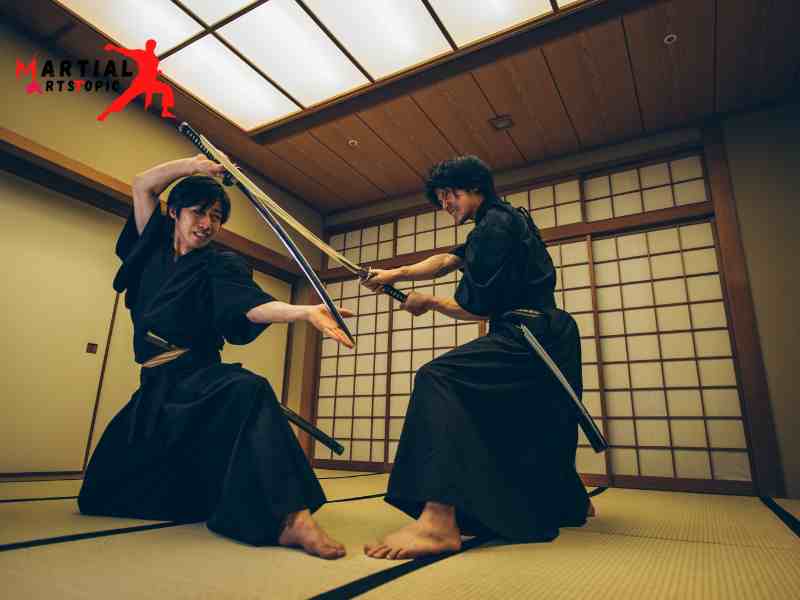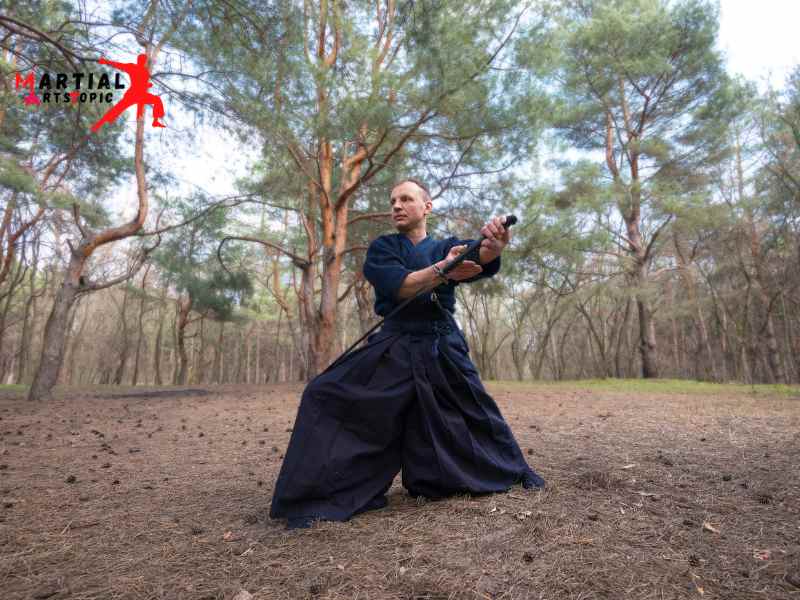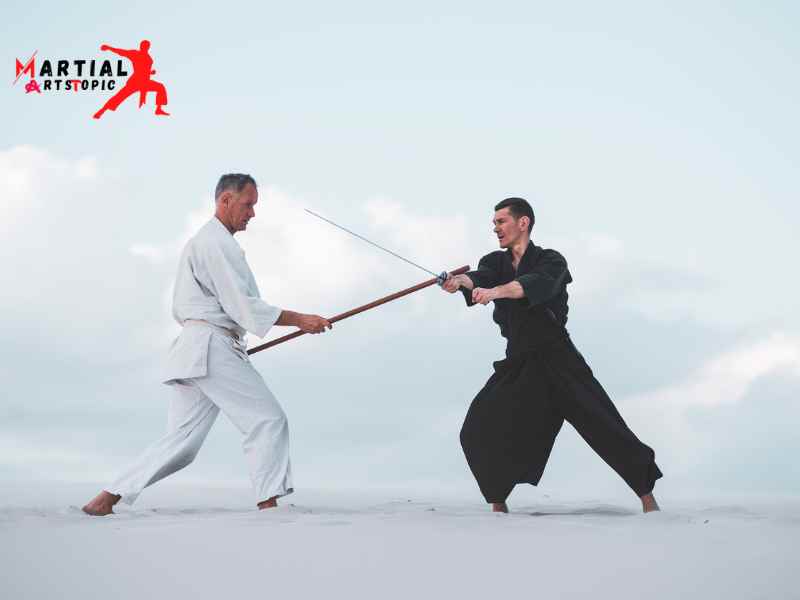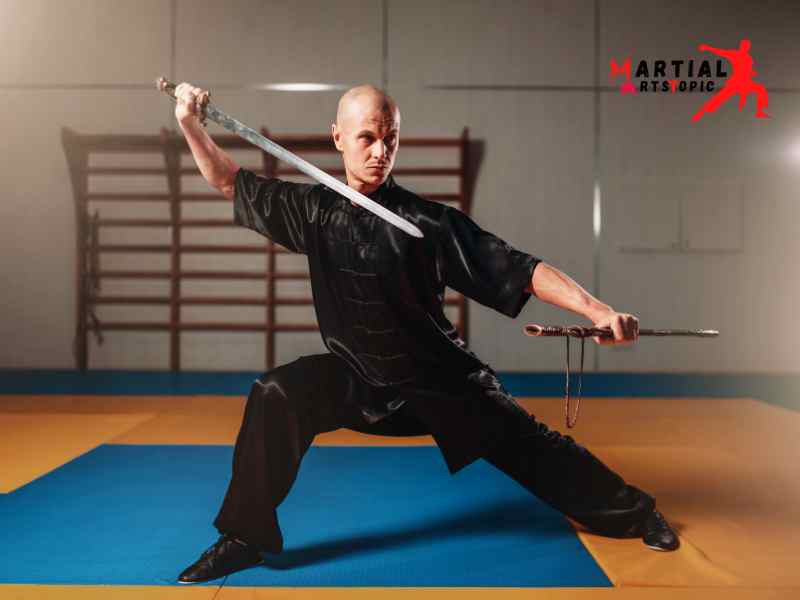
Brief explanation of kendo martial arts
Kendo Martial Arts: Unleashing the Warrior Within, In the realm of martial arts, there is a discipline that combines the precision of a samurai, the intensity of a warrior, and the grace of a dancer. This discipline is none other than Kendo martial arts, an ancient Japanese practice that has captivated people worldwide with its rich history and interesting techniques. In this blog post, we will explore the essence of Kendo martial arts, its origins, and the benefits it offers to those who embark on this incredible journey.
Originating in Japan during the feudal era, Kendo martial arts started as a method of training for samurai warriors. Derived from kenjutsu, the art of the sword, Kendo developed into a distinct discipline that encompasses not only physical techniques but also mental fortitude and spiritual growth. The word “Kendo” itself means “the way of the sword.” It emphasizes the path of self-improvement through rigorous training and self-discipline.
At the core of Kendo martial arts lies the use of the shinai, a bamboo sword, and the protective armor known as bogu. The shinai allows practitioners to strike their opponents with precision and speed, while the bogu ensures safety during intense sparring sessions. The goal of Kendo is not to overpower an opponent but to develop self-control, focus, and respect.
One of the key aspects of Kendo martial arts is the concept of kiai, which means “spirit shout.” Kiai is a vocalization technique used to express one’s fighting spirit and to intimidate opponents. It is believed that through kiai, the practitioner can channel their energy and focus it on every strike, making it more powerful and effective. This combination of physical techniques and mental focus is what sets Kendo apart from other martial arts.
Apart from its rich history and unique techniques, Kendo martial arts offers a myriad of benefits for those who practice it. On a physical level, Kendo improves strength, flexibility, and coordination. The repetitive movements and challenging exercises help to build muscle tone and increase cardiovascular endurance. Additionally, Kendo enhances mental discipline, concentration, and self-confidence. The practice of Kendo requires intense focus, allowing practitioners to develop a calm and centered mind even in the face of adversity.
Moreover, Kendo martial arts instills important values, such as respect, humility, and integrity. The strict code of conduct, known as the “Dojo Kun,” emphasizes the importance of respecting one’s opponents, instructors, and the art itself. This code extends beyond the training hall and becomes a way of life for Kendo practitioners, shaping them into honorable individuals both on and off the battlefield.
History of Kendo
The Fascinating History of Kendo: Unveiling the Secrets of this Ancient Martial Art Kendo, a traditional Japanese martial art, has captivated enthusiasts around the world with its grace, discipline, and rich history. Rooted in the samurai warriors’ legacy, Kendo has developed over centuries, preserving its essence and teachings. In this blog post, we will delve deep into the captivating history of Kendo and explore the reasons why it continues to thrive today.
Kendo, derived from the words “ken” (sword) and “do” (way), can be traced back to the feudal era of Japan. It originated as a training method for samurai warriors to enhance their swordsmanship skills, preparing them for life-or-death battles. However, Kendo’s roots can be traced even further back to the early Heian period (794-1185) when sword fighting techniques were first documented.
During the Edo period (1603-1868), Kendo underwent significant development. This era saw the establishment of various schools and styles, each with its unique approach and teachings. The introduction of bamboo swords, known as “shinai,” allowed practitioners to engage in more realistic and safe training, ensuring that they could hone their skills without risking their lives.
Kendo’s transformation into a modern martial art began in the late 19th century when Japan underwent a period of rapid modernization. The country embraced Western ideologies and sought to preserve its cultural heritage simultaneously. Kendo, with its deep historical roots, became a symbol of national identity and played a crucial role in the formation of modern-day Japan.
In 1895, the All Japan Kendo Federation (AJKF) was established, further solidifying Kendo’s status as a respected martial art. The AJKF standardized Kendo’s rules and regulations, enabling practitioners to compete and showcase their skills in a structured and fair environment. Today, the AJKF continues to govern Kendo in Japan, ensuring its preservation and growth.
Kendo’s training is not only focused on physical techniques but also emphasizes spiritual development. Practitioners strive to cultivate a powerful spirit, discipline, and respect, known as “kendōka spirit.” Through rigorous training, Kendo practitioners learn to overcome challenges, develop self-control, and cultivate a sense of humility.
Kendo’s popularity has spread beyond Japan’s shores, attracting practitioners from all over the world. With its profound cultural significance and emphasis on self-improvement, Kendo has become a way of life for many dedicated individuals. The practice of Kendo promotes physical fitness, mental clarity, and the development of strong character traits.
Importance and popularity of kendo

Kendo: The Significance and Popularity of the Martial Art In the world of martial arts, Kendo stands out as a discipline deeply rooted in tradition, skill, and honor. Originating in Japan, this martial art has gained immense popularity across the globe, captivating both practitioners and enthusiasts alike. In this article, we will delve into the importance and widespread appeal of Kendo, shedding light on its rich history, unique techniques, and the benefits it offers to individuals.
Kendo, also known as the “way of the sword,” is a modern martial art that developed from traditional swordsmanship techniques practiced by Japanese samurai warriors. It emphasizes the use of a bamboo sword called a shinai and protective armor known as bogu. This combination of equipment allows practitioners to engage in realistic and dynamic sword-based combat while ensuring safety.
One of the key reasons behind the popularity of Kendo is its strong focus on discipline and self-improvement. Practitioners not only learn physical techniques, but also cultivate a strong sense of mental fortitude. The rigorous training involved in Kendo helps individuals develop qualities such as patience, perseverance, and respect for oneself and others. These values extend beyond the training hall and can positively affect various aspects of one’s life, including personal relationships and career.
Kendo is also renowned for its emphasis on the concept of “ki-ken-tai-ichi,” which translates to “spirit, sword, and body in unity.” This principle highlights the importance of synchronizing one’s mental state, sword techniques, and physical movements. By achieving this unity, practitioners are able to execute precise strikes with speed and accuracy, making Kendo not only a martial art but also an art form in itself.
Apart from the mental aspects, Kendo provides numerous physical benefits. The rigorous training sessions help improve overall fitness, agility, and coordination. The repeated striking and defensive techniques help develop strength and endurance. Additionally, Kendo promotes good posture, balance, and body awareness, leading to improved posture and reduced risk of injuries.
The competitive nature of Kendo also contributes to its popularity. Practitioners have the opportunity to test their skills and compete against others in tournaments and matches. These events not only provide a platform to showcase one’s abilities but also foster a sense of camaraderie and sportsmanship among participants. The thrill of victory and the lessons learned from defeat further fuel the passion for Kendo and inspire individuals to continue their training.
In recent years, Kendo has seen a surge in popularity outside of Japan. Its appeal lies in its ability to transcend cultural boundaries and bring people from diverse backgrounds together. Kendo dojos (training halls) can now be found in various countries, offering individuals the opportunity to immerse themselves in this ancient art form. This globalization of Kendo has not only increased awareness but also paved the way for cultural exchange and understanding.
Basics of Kendo
Kendo Martial Arts: The Basics of this Ancient Japanese Discipline in the world of martial arts, there are various disciplines that have been passed down through generations, each with its own unique history and techniques. One such discipline is Kendo, a traditional Japanese martial art that combines the art of swordsmanship focusing deep on personal development and self-discipline. The basics of Kendo and delve into its rich history and principles.
Originating from the samurai warriors of feudal Japan, Kendo has evolved into a modern martial art that is practiced by people of all ages around the world. The word “Kendo” itself can be broken down into two parts – “ken” meaning sword, and “do” meaning the way or path. In essence, Kendo can be seen as the way of the sword.
Kendo practitioners, also known as kendoka, wear a traditional uniform called a “gi” and protective armor known as “bogu.” The primary weapon used in Kendo is the “shinai,” a bamboo sword that allows practitioners to engage in full-contact sparring while minimizing the risk of serious injury. The goal of Kendo is not to defeat an opponent but rather to focus on self-improvement and the cultivation of a strong spirit.
One of the key aspects of Kendo is its emphasis on discipline and respect. Before and after each training session, kendoka perform a series of etiquette rituals, such as bowing and saluting, to show respect to their sensei (teacher) and fellow practitioners. This sense of respect and humility is ingrained in every aspect of Kendo and is considered essential for personal growth.
Kendo is not solely about physical strength and technique; it also places great importance on developing a strong mental and spiritual state. Through rigorous training and practice, kendoka learn to master their emotions, stay calm under pressure, and maintain focus and concentration. This mental fortitude is not only valuable within the dojo (training hall) but also extends to daily life, helping practitioners face challenges with resilience and determination.
We can summarize the philosophy of Kendo by its guiding principles known as the “Nana Korobi Ya Oki” (Fall down seven times, get up eight) mindset. This principle emphasizes the importance of perseverance, resilience, and never giving up, even in the face of adversity. Kendoka strive to embody this principle both on and off the training mat, constantly pushing themselves to improve and overcome obstacles.
In addition to its physical and mental benefits, Kendo also serves as a means of preserving the cultural heritage and traditions of Japan. Many kendoka participate in tournaments and demonstrations, showcasing their skills and promoting the art of Kendo to a wider audience. This not only helps to spread awareness about this ancient discipline but also fosters a sense of unity and camaraderie among practitioners worldwide.
Whether you are a seasoned martial artist or someone looking to embark on a new journey, Kendo offers a unique and enriching experience. Through its focus on discipline, respect, and personal growth, Kendo not only helps to improve physical fitness and self-defense skills but also cultivates a deeper understanding of oneself and the world around us.
Kendo Techniques and Training

Kendo Techniques and Training: Master the Art of Kendo Martial Arts Are you fascinated by the ancient Japanese martial arts? Do you find the art of sword fighting intriguing? If so, then Kendo, a traditional Japanese martial art, might be the perfect choice for you. In this blog post, we will explore the world of Kendo, its techniques, and the training required to master this captivating martial art.
What is Kendo?
Kendo, also known as the “way of the sword,” is a modern Japanese martial art that focuses on swordsmanship. Its origins can be traced back to the samurai warriors of feudal Japan. Today, they practiced Kendo both as a competitive sport and a means of personal development.
Kendo Techniques: Unleash Your Inner Samurai
Kendo techniques involve the use of a bamboo sword called a “shinai” and protective armor known as “bogu.” The objective is to strike specific targets on your opponent’s body while maintaining proper form and posture. Here are some essential Kendo techniques you need to master:
- Strikes (Uchi): The fundamental Kendo technique involves striking your opponent’s target areas with controlled and precise movements. The most common targets are the head, wrists, and torso.
- Thrusts (Tsuki): Tsuki is a thrusting technique aimed at the throat of your opponent. It requires accuracy, speed, and a strong sense of distance.
- Deflections (Kaeshi-waza): Kaeshi-waza involves deflecting your opponent’s strikes and counter-attacking swiftly. It requires quick reflexes and a deep understanding of timing.
- Footwork (Ashi-sabaki): Proper footwork is crucial in Kendo. It enables you to maintain balance, move swiftly, and create opportunities for strikes.
Kendo Training: The Path to Mastery
Becoming proficient in Kendo requires dedication, discipline, and regular training. Here are some key aspects of Kendo training:
- Basics (Kihon): Mastering the basics is the foundation of Kendo. Kihon training focuses on developing correct posture, footwork, strikes, and timing.
- Kata: Kata refers to pre-arranged sequences of movements that simulate combat scenarios. Practicing Kata helps improve technique, coordination, and understanding of Kendo principles.
- Sparring (Keiko): Keiko involves supervised sparring sessions with other practitioners. It allows you to apply your techniques in a controlled environment and develop your tactical skills.
- Physical Conditioning: Kendo requires physical strength, endurance, and agility. Regular physical conditioning, including strength training and cardiovascular exercises, is essential to improve your overall performance.
Benefits of Practicing Kendo
Beyond the physical aspects, practicing Kendo offers numerous benefits:
- Discipline and Focus: Kendo instills discipline, concentration, and mental focus. It teaches you to remain calm and composed under pressure.
- Character Development: Kendo promotes values such as respect, humility, and perseverance. It helps develop a strong character and fosters a sense of community among practitioners.
- Physical Fitness: Kendo is a dynamic martial art that provides a full-body workout. It improves cardiovascular health, muscle strength, and flexibility.
- Stress Relief: Engaging in Kendo helps release stress and tension from everyday life. It offers an outlet to channel your energy and find balance.
Embark on Your Kendo Journey
Whether you are a beginner or an experienced martial artist, Kendo offers an enriching and challenging path. By mastering Kendo techniques and embracing the training, you can unlock the true essence of this ancient Japanese martial art. Start your Kendo journey today and experience the thrill of becoming a modern-day samurai.
Kendo Competitions and Events

Kendo competitions and events are an integral part of the Japanese martial art, offering practitioners the opportunity to showcase their skills and compete against fellow enthusiasts. These events attract participants from all skill levels, ranging from beginners to experienced kendoka. Whether it’s a local tournament or a national championship, kendo competitions offer a platform for athletes to test their techniques, agility, and mental fortitude. In addition to the competitive aspect, these events also foster a sense of camaraderie amongst participants, promoting the exchange of knowledge and the growth of the kendo community. Whether you’re a spectator or a participant, kendo competitions and events are an exciting and immersive experience that truly captures the essence of this traditional martial art.
Benefits of Kendo
Kendo, also known as the way of the sword, is a traditional Japanese martial art that has gained popularity worldwide. With its rich history and disciplined training, Kendo offers a multitude of benefits for both the mind and body. In this blog post, we will explore the various advantages of practicing Kendo and why it has become a cherished martial art for many.
- Physical Fitness: One of the most obvious benefits of practicing Kendo is the improvement of physical fitness. Kendo requires a combination of strength, agility, and endurance. The rigorous training sessions, which include striking techniques and footwork drills, help to develop muscle tone, increase cardiovascular health, and improve overall body coordination.
- Mental Focus: Kendo not only challenges the body but also the mind. The art of Kendo requires intense concentration, as practitioners must remain fully present in the moment while anticipating their opponent’s moves. This level of mental focus helps to enhance mindfulness, improve reaction time, and develop a strong sense of situational awareness.
- Discipline and Self-Control: Kendo places a strong emphasis on discipline and self-control. We expect practitioners to adhere to strict rules and etiquettes, both on and off the training floor. Through the practice of Kendo, individuals learn to control their emotions, develop self-discipline, and cultivate a respectful attitude towards others.
- Stress Relief: Like any physical activity, Kendo serves as an excellent outlet for stress relief. The intense training sessions allow practitioners to release pent-up tension and frustration, promoting a sense of calmness and relaxation. Additionally, the focus required in Kendo helps to clear the mind of daily worries and allows practitioners to experience a state of flow.
- Character Development: Kendo is not just about physical techniques; it is a way of life that emphasizes character development. The principles of Kendo, such as respect, integrity, and perseverance, extend beyond the training floor and can be applied to everyday life. Through the practice of Kendo, individuals can cultivate important qualities that contribute to personal growth and success.
- Social Interaction: they often practiced Kendo in a group setting, which encourages social interaction and the formation of strong bonds among practitioners. The camaraderie and teamwork fostered in Kendo provide a supportive and motivating environment for individuals to grow and improve together. Additionally, Kendo offers opportunities to participate in local, national, and international competitions, allowing practitioners to connect with fellow Kendo enthusiasts from around the world.
- Cultural Appreciation: By practicing Kendo, individuals can develop a deep appreciation for Japanese culture and traditions. Kendo’s origins date back centuries, and its techniques and philosophies are rooted in Japanese history. Through the study of Kendo, practitioners gain a greater understanding of Japanese culture, language, and values, fostering cross-cultural awareness and respect. Famous Kendo Practitioners Famous Kendo Practitioners kendo, the Japanese martial art of swordsmanship, has a rich history and has been practiced by many skilled individuals throughout the years. Here are some of the most famous kendo practitioners who have left a lasting impact on this esteemed discipline.
- Miyamoto Musashi: Considered one of the greatest swordsmen in Japanese history, Miyamoto Musashi is renowned for his expertise in both kendo and other martial arts. He was undefeated in over 60 duels and authored “The Book of Five Rings,” a classic text on strategy and philosophy.
- Yamaoka Tesshu: A prominent samurai and kendo master, Yamaoka Tesshu was instrumental in the modernization of kendo during the Meiji era. He combined traditional techniques with a more practical approach, laying the foundation for kendo as it is practiced today.
- Nakakura Kiyoshi: Known for his exceptional skills and dedication to kendo, Nakakura Kiyoshi was instrumental in promoting the art both in Japan and internationally. He played a pivotal role in establishing the All Japan Kendo Federation and contributed to the standardization of kendo techniques.
- Saimura Goro: Saimura Goro was a highly influential figure in the world of kendo. He was known for his precise and powerful strikes and was a key proponent in the development of “sen” techniques, which involve attacking an opponent’s openings with speed and precision.
- Inoue Yoshihiko: they recognize Inoue Yoshihiko as one of the most dominant kendo practitioners of his time. He won the All Japan Kendo Championships multiple times and was known for his dynamic and aggressive style of fighting.
- Takanabe Susumu: Takanabe Susumu was a legendary kendo master who won the All Japan Kendo Championships a record-breaking six times. They celebrated him for his exceptional footwork, technique, and indomitable spirit, making him a true icon in the world of kendo.
- Eiga Naoki: Eiga Naoki is a modern-day kendo practitioner who has achieved great success in both national and international competitions. He has won numerous titles, including the All Japan Kendo Championships, and continues to inspire future generations of kendo practitioners with his skill and dedication.
These are just a few examples of the many famous kendo practitioners who have made significant contributions to this ancient martial art. Their skill, dedication, and passion for kendo have not only elevated the art form but have also inspired countless practitioners around the world. Whether through their writings, teachings, or tournament victories, these individuals have left a lasting legacy in the world of kendo.
